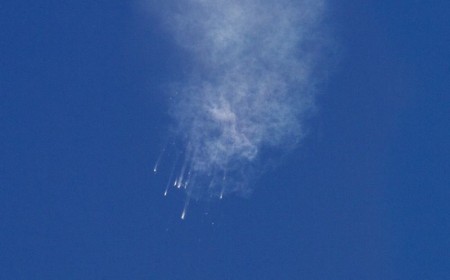June 29, 2015 – The United States has put its trust in commercial space operators, Orbital, Boeing and SpaceX to continue supporting low-Earth orbit unmanned and human space activities. But on Sunday a SpaceX Falcon 9 rocket exploded 2 minutes into its orbital resupply mission and now NASA and the American government have to be questioning the strategy.
In all fairness, the problems of resupplying the International Space Station (ISS) has not been limited to commercial rocket failures. The Russians have also had their share of woes. But the Americans hoped to wean themselves off relying on Russian launchers by 2017 and Sunday’s accident suggests the strategy may be flawed.
NASA cannot operate its human missions to the ISS without third parties these days. The retirement of the Shuttle, an over built and costly piece of technology, has left the United States without human launch capacity. In addition the squeeze being put on NASA budgets by the Congress of the United States continues to take money out of the program.
NASA’s answer has been to turn to the commercial sector and a number of companies have emerged with options that have for the most part demonstrated some degree of success. SpaceX before this accident had delivered six resupply modules to ISS without incident. Orbital had successfully supplied ISS in previous missions until its accident last year. At the time of the Orbital accident, Elon Musk, SpaceX founder described the Orbital rocket as a “punchline to a joke.” I’m afraid hubris has caught up with Mr. Musk as it has with the U.S. commercial space program initiative.
It is hard to imagine astronauts relying on a technology that even with redundant safety checks blows up two minutes into a flight. The only saving grace may be the Dragon capsules recent successful completion of a crew abort test. If astronauts had been aboard the Falcon 9, at least they would have stood a chance of surviving although the rocket was flying at supersonic speeds when it blew up and Dragon has yet to be abort tested at that speed and altitude.
But all eyes in the American space program are now on the Falcon 9 which has been designated as a prime launch vehicle for not only NASA but also the U.S. military. Known as the cheap alternative to other commercial launch vehicles, the SpaceX rocket’s string of successes and its maverick approach the company has taken to date will certainly be reviewed. Cost cutting is primarily the raison d’etre for where American space ambitions lie today. There will be many in the military and at NASA who will be saying “you get what you pay for.”

















